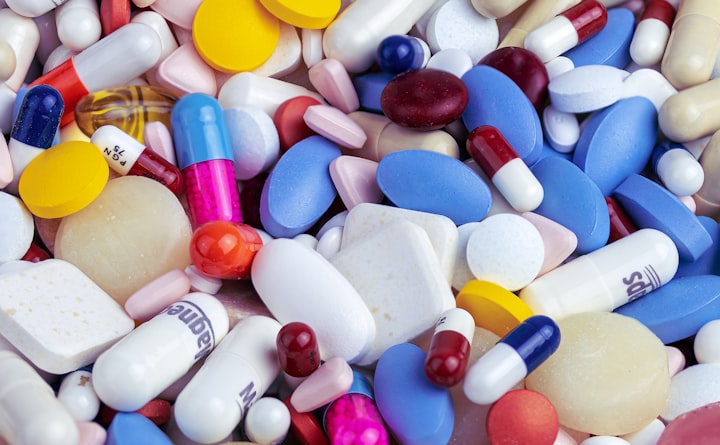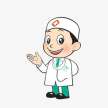Why Should Chronic Prostatitis be Cured Completely and not Abandoned Halfway?
Treat chronic prostatitis: Don't give up halfway

Lately, many people have been asking, "How can chronic prostatitis be effectively treated? I've sought treatment in multiple places, but it keeps coming back. Is there a way to achieve a permanent cure?"
Today, Dr. Lee from Wuhan Dr. Lee's TCM Clinic will provide a detailed treatment plan for chronic prostatitis based on a patient's case. We encourage everyone to read this carefully.
James's Medical Journey:
In 2017, James began experiencing symptoms of chronic prostatitis, including frequent urination, weak urine flow, thin stream, split stream, and abdominal discomfort. While he researching his condition online, he soon realized that treating the disease was more challenging than he had imagined. His symptoms showed no improvement even after three years of treatment.
Frustrated, he turned to another hospital that claimed to offer a quick and highly effective treatment. Initially, he felt better after the first treatment, so he proceeded with a second round. Unfortunately, his symptoms recurred a few days after the second treatment.
In early 2021, he contacted Dr. Lee and asked, "Is there no cure for this condition?"
Dr. Lee explained, "Your previous treatments didn't address the glandular lesions; they merely focused on symptoms. You can achieve a complete cure by taking the herbal medicine Diuretic and Anti-inflammatory Pill."
After a few days, James visited the clinic for in-person treatment. After examining him, Dr. Lee advised, "While your current condition is not severe, you should undergo two additional courses of consolidation treatment after your physical symptoms have completely disappeared to prevent future recurrences."
By June 2021, James had completed five courses of Diuretic and Anti-inflammatory Pill. His gland size had returned to normal, and his symptoms had completely disappeared, with no recurrence to date.
James's Treatment Plan:
1. Regular Sleep: Aim to sleep before 11:30 pm, as 11:00 pm to 1:00 am is the liver's detoxification time. Getting about 8 hours of sleep can boost immunity, metabolism, and help the prostate fight inflammation.
2. Dietary Changes: Avoid cold and irritating foods during initial treatment, as they can exacerbate glandular lesions. Reduce alcohol and coffee consumption, and limit acidic foods like citrus and orange juice. Opt for fresh fruits, whole grains, soy products, and honey to aid digestion. Don't reduce water intake due to frequent urination; staying hydrated helps dilute urine.
3. Anal Lifting Exercises: This exercise can be performed anywhere, offering great convenience and value. Firmly contract and lift the anus 30 times in a row, and then take a 2-3 minute break. This daily routine proves beneficial for enhancing urinary control and reducing pelvic floor discomfort.
Pelvic floor pain often results from involuntary spasms of the pelvic floor muscles. Engaging in anal lifting exercises can improve the body's capacity to regulate these muscles, ultimately alleviating pelvic floor pain. Elderly individuals with benign prostatic hyperplasia can also benefit from pelvic floor muscle exercises through anal lifting, enhancing urinary control and restoring smooth urination.
4. Jogging : Jogging offers significant benefits by enhancing blood circulation, improving cardiovascular and respiratory functions, and effectively stimulating pelvic floor muscles to massage the prostate and reduce inflammation. This plays a crucial role in alleviating chronic pelvic pain syndrome symptoms. Consider jogging 3-4 times a week for 30 minutes to 1 hour each session.
During jogging, aim for a mild sweat and maintain a heart rate of 80% to 90% of your maximum heart rate to effectively prevent disease recurrence. Ensure you stretch your legs and thighs before running and change your underwear promptly afterward.
In conclusion:
James initially received various treatments, and his body developed some resistance to medications, leading to slow recovery. It's common for glandular lesions to relapse since they were not effectively addressed. However, James remained committed to treatment, focusing on improving glandular lesions, ultimately achieving a successful outcome. It's important not to interrupt treatment prematurely, as this could lead to worsened conditions.
About the Creator
Amanda Chou
Looking to restore your life troubled by prostatitis, epididymitis, seminal vesiculitis and other male reproductive system diseases? Here are the resource to help you in this endeavor.






Comments
There are no comments for this story
Be the first to respond and start the conversation.